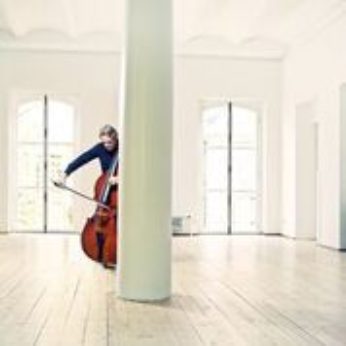Composer: Giovanni Bottesini (b. 1821 - d. 1889)
Performance date: 01/07/2015
Venue: Bantry Library
Composition Year: 1851
Duration: 00:17:29
Recording Engineer: Richard McCullough, RTÉ lyric fm
Instrumentation: 2vn, va, vc, pf
Instrumentation Category:Trio
Instrumentation Other: vn,db,pf
Artists:
Alina Ibragimova -
[violin]
Niek de Groot -
[double bass]
Peter Laul -
[piano]

Bottesini
is not a name on every music-lover’s lips, but in his day he was renowned as
the Paganini of the Double Bass. Legend
has it that he took up the bass as it was the only scholarship available at the
Milan Conservatory, so he took a crash course in bass playing and, despite
giving a disastrous audition, the fifteen-year-old talked his way into the
scholarship. In a few years critics were writing ecstatic reviews about his
playing – Under his bow, the double bass
groaned, sighed, cooed, sang, quivered, roared – an orchestra in itself with
irresistible force and the sweetest expression….supported by his great wooden
sound-box, Bottesini leant over his instrument like a conquering hero. He
was also a noted conductor and was chosen by Verdi to conduct the premiere of Aida in Cairo.
The Gran
Duo Concertante exists in many versions. Bottesini originally composed it
as a sort of duo concerto, for two basses and orchestra. The violin virtuoso Ernesto
Camillo Sivori, Paganini’s only student, adapted it for violin and bass, making
it a showcase for both instruments. The piano reduction of the orchestral
accompaniment was standard practice. There is also a version of the work with
clarinet instead of violin.
Although there
are obvious concerto references, including a dazzling duo cadenza two thirds
way through, in general shape the Gran
Duo is more like an opera scena.
It begins in the minor with a sternly declamatory introduction and rhapsodic
solos, which set up a sweet cantabile
section in the major, with the lyrical melody shared between the soloists and
embellished like a bel canto aria.
The accompaniment returns with the march-like introduction, which ultimately
brings the music back to a triumphant conclusion. The virtuosity demanded along
the way is breath-taking.
Copyright © 2024 West Cork Music. All rights reserved.
Designed and developed by Matrix Internet